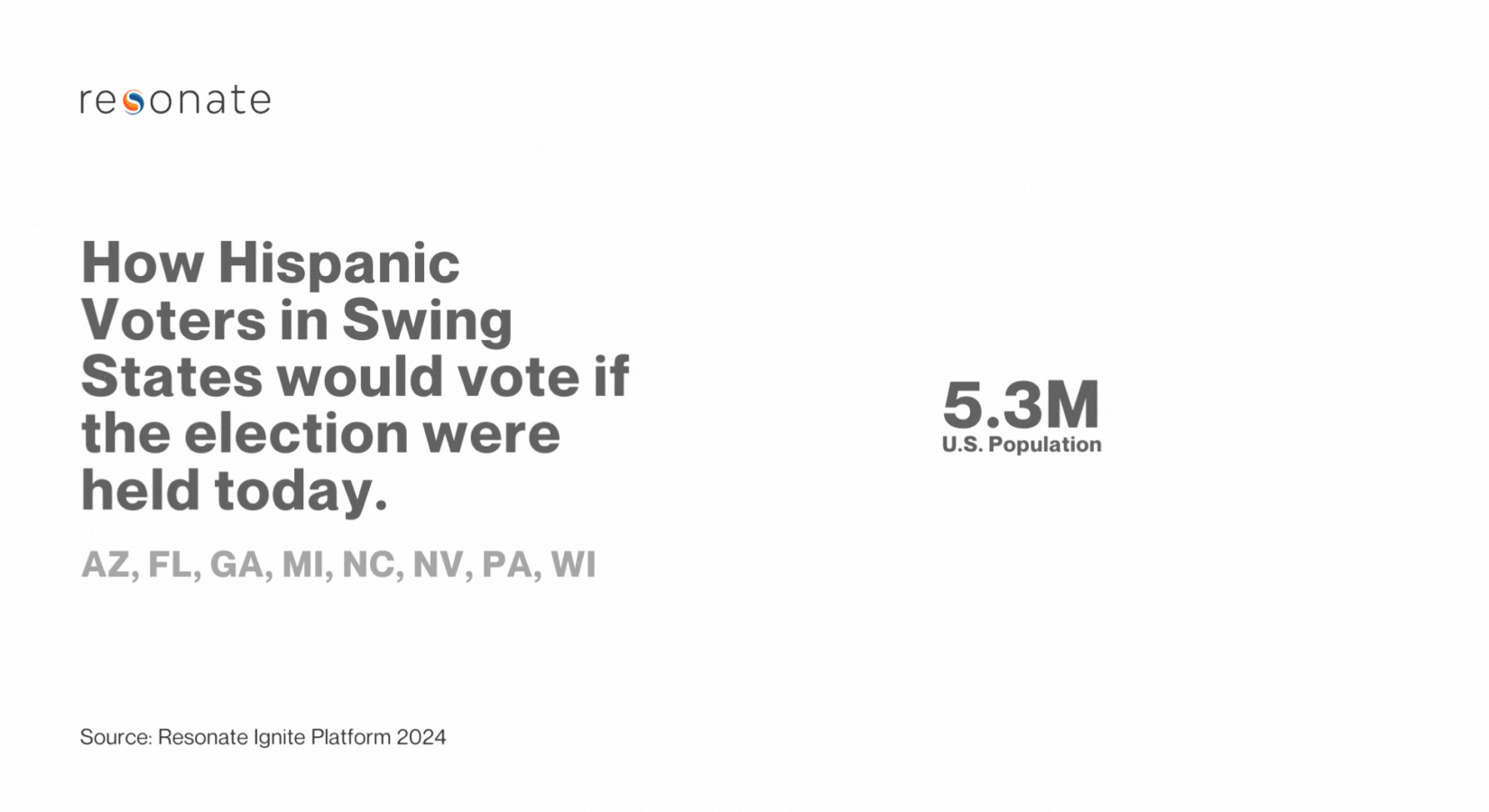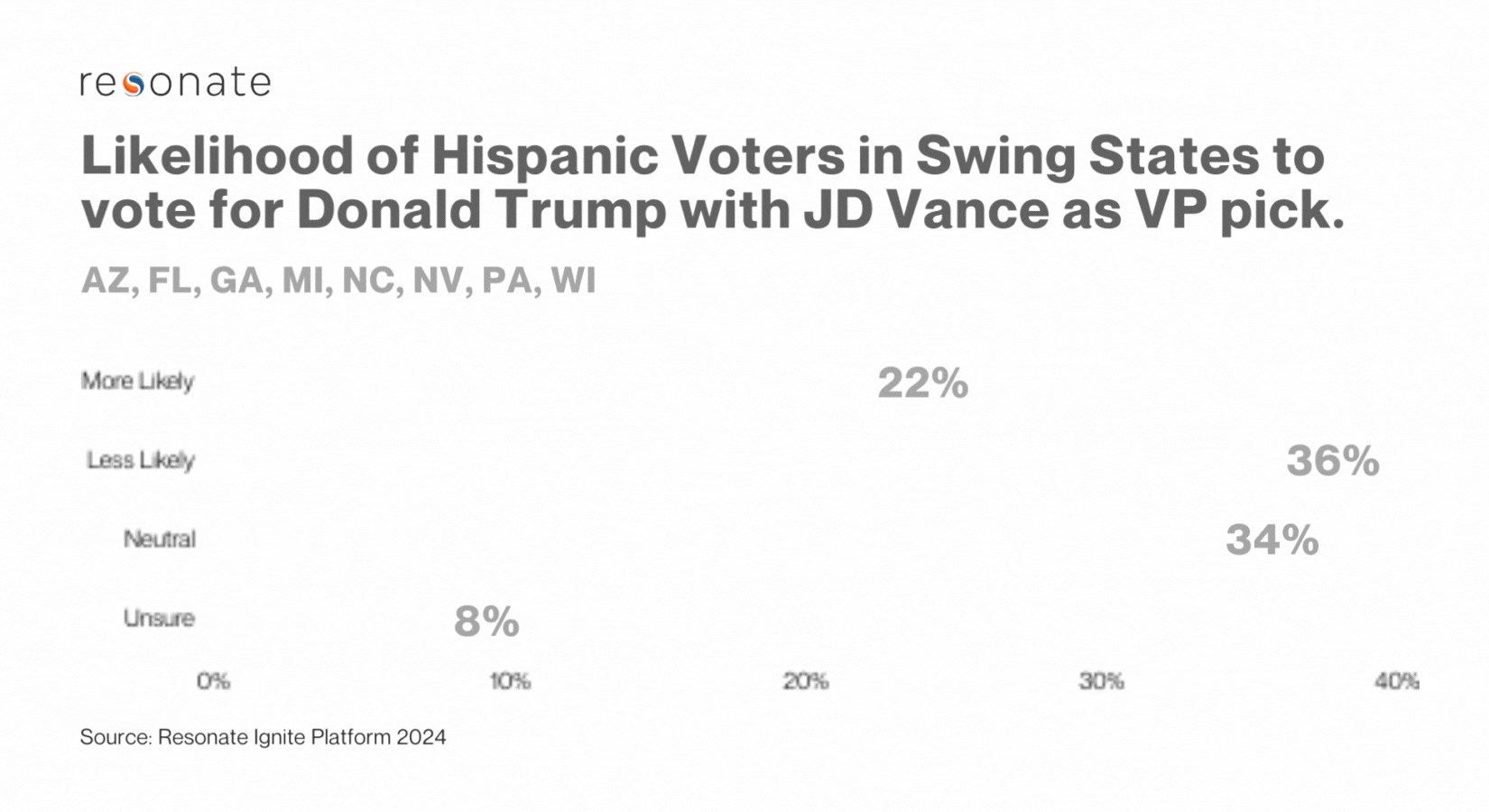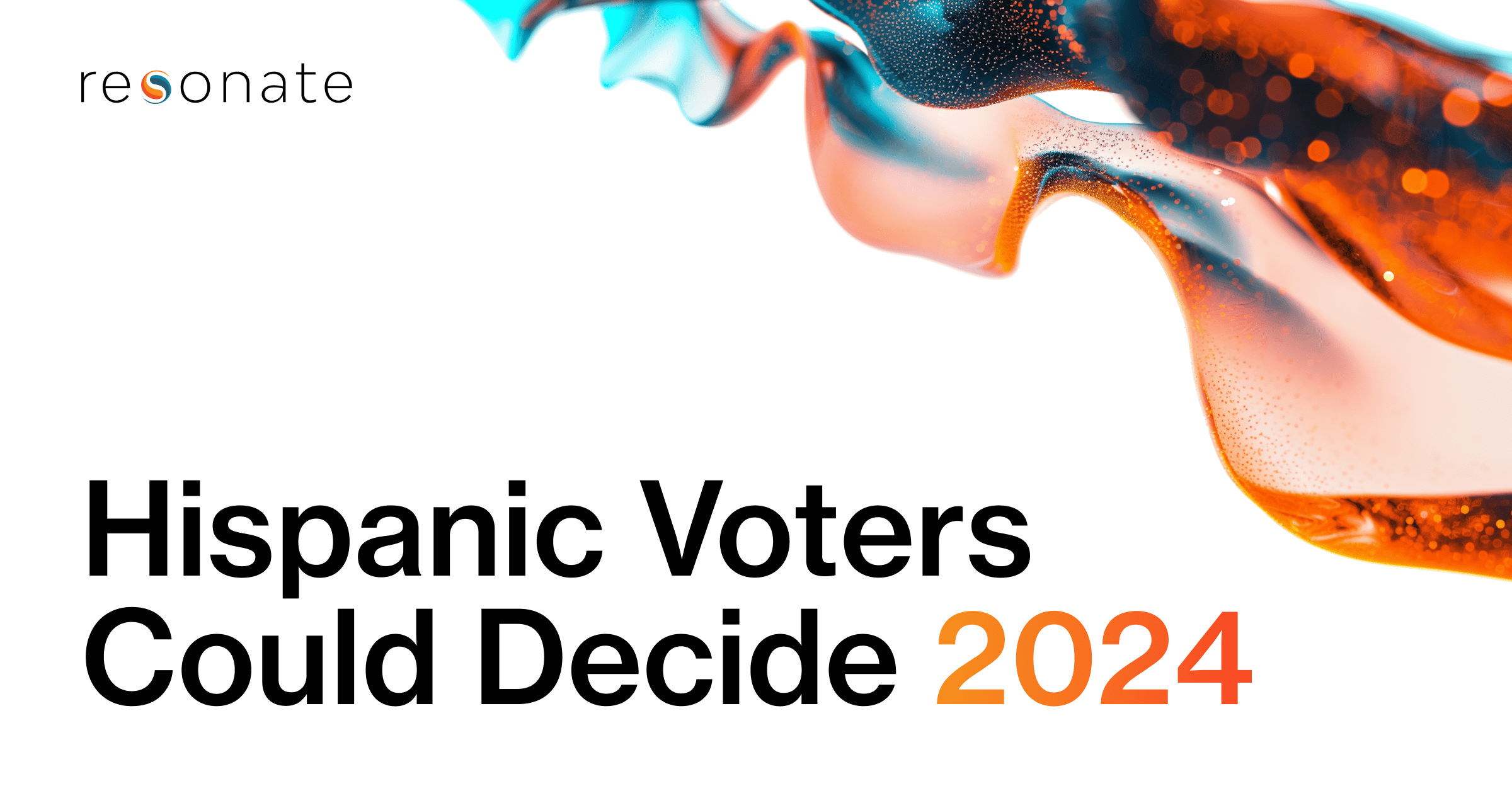As the 2024 presidential election draws near, the Hispanic vote—a critical and growing bloc—could prove decisive. Historically, Latinos have leaned Democratic, but recent trends reveal this advantage narrowing, raising questions about the influence this demographic could have on election outcomes, especially in swing states.
A Shrinking Democratic Margin
Vice President Kamala Harris currently leads former President Donald Trump among Latino voters by 14 points, according to an NBC News, Telemundo, and CNBC poll. Resonate data shows that Harris commands 46% support among Hispanic voters, while 34% support Trump. However, this lead is significantly smaller than the margins seen in previous elections, where Democrats held a much larger advantage.
In 2012, the Democratic candidate led by 39 points; in 2016, the lead was 50 points. Our data shows that in 2020, 49% of this audience voted for Joe Biden, while only 29% voted for Donald Trump. The trend indicates a steady decrease in the Democratic stronghold on the Hispanic vote, creating an opening for Republicans to gain ground—if they can successfully address this group’s concerns.
How Swing State Hispanic Voters Are Leaning
Looking specifically at Hispanic voters in swing states, Resonate data reveals an even more nuanced picture. Although Harris holds a lead, 6% remain undecided, and 3% are leaning toward third-party candidates. This undecided and third-party vote could be the key to determining the election’s outcome, presenting a huge opportunity for both campaigns.

With 6% undecided and 3% leaning toward third-party candidates, the race is far from settled, especially in states where a small margin could make a big difference. Both Harris and Trump will need to appeal to this pivotal bloc, which is particularly concerned with economic security and social issues.
JD Vance as Trump’s VP Pick: Not Resonating with Hispanic Voters
While Trump’s VP pick, JD Vance, has influenced some voters, Resonate’s data shows a mixed reaction among Hispanic voters in swing states. Here’s how this group feels about Vance on the ticket:

Although 22% of voters say they’re more inclined to back Trump with Vance, the larger share—36%—is less likely to support the ticket. Still, with 34% neutral and 8% undecided, there’s a potential for the Trump campaign to further clarify its message to engage this group.
Key Issues for Hispanic Voters
Understanding what motivates Hispanic voters is key to determining which way this group might lean as the election approaches. Resonate’s data shows that Hispanic voters in swing states are highly concerned about economic insecurity and societal issues:
- Job security: Fear of losing a job, either personally or in the household, is a top concern, reflecting broader economic anxieties.
- Environment and climate change: Concerns over climate issues remain high, likely driven by the tangible impacts of extreme weather events that have affected many Latino communities.
- Crime, violence, and mass shootings: Safety concerns are paramount, underscoring the need for both campaigns to address crime prevention and public safety.
- Economic slowdown or recession: Worry over a U.S. economic slowdown ranks high, making economic policy a critical factor in winning this demographic’s vote.
Underdiscussed Issues: The Environment and Climate Change
One area from above where both campaigns have yet to fully capitalize is climate and environmental issues. This critical issue has largely gone underdiscussed in the broader campaign narratives. 49% of this audience believe that one of the biggest threats to the U.S. are the effects of climate change.
Addressing environmental concerns could provide a pathway for Harris to solidify her lead or offer Trump a chance to connect with voters who may feel their worries about climate are being ignored.
Immigration and Border Security: A Growing Concern
Illegal immigration and border security are key issues for Hispanic voters, especially in swing states. According to Resonate’s data, 37% of Hispanic voters across the country believe that illegal immigration and the lack of border security are among the biggest threats to the U.S. This concern grows even stronger in Sun Belt states like Arizona and Nevada, where 40% of Hispanic voters view these issues as top threats.
When it comes to trust in handling immigration, the numbers show a clear divide:
- 42% of Hispanic voters trust Kamala Harris and the Democratic Party to manage immigration effectively
- 49% believe Donald Trump and the Republican Party would do a better job securing the border and addressing illegal immigration
While Trump’s stance on border security resonates with nearly half of this audience, Harris’s focus on treating immigrants humanely and advocating for comprehensive reform still appeals to a significant portion. For both candidates, striking a balance between addressing security concerns and promoting humane immigration policies could be pivotal in swaying undecided voters.
Financial Concerns: Who Is Feeling the Strain?
Hispanic voters’ economic realities are another key driver in shaping their decisions at the polls. According to Resonate, 66% of this audience describes their financial situation as “getting by,” meaning they can cover necessities but have little left over, while 19% report “living comfortably,” and 14% say “times are hard.” Economic challenges make policies addressing cost-of-living, wages, and job creation crucial for winning their support.
Conclusion: A Pivotal Moment for the Hispanic Vote
The Hispanic vote in 2024 remains one of the most critical variables in this election. With a significant portion of the electorate undecided or leaning third-party, both the Harris and Trump campaigns have a major opportunity to engage this demographic—particularly by addressing underrepresented concerns like climate change and economic stability.
As both parties vie for this influential group, the strategies they deploy in the final weeks could ultimately determine not only who wins the Hispanic vote but also who wins the presidency. In this crucial election, the path to victory may well run through the heart of the Latino electorate.



